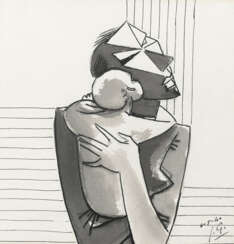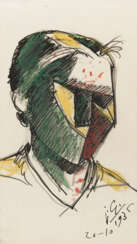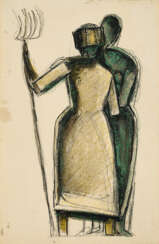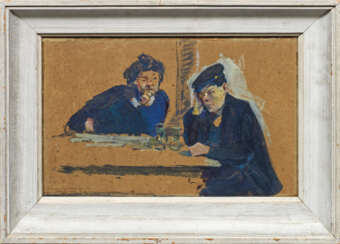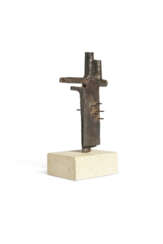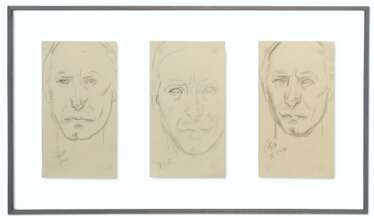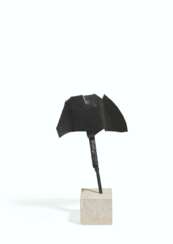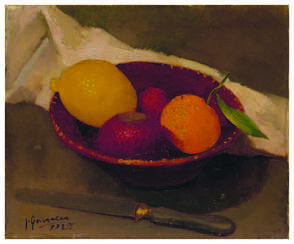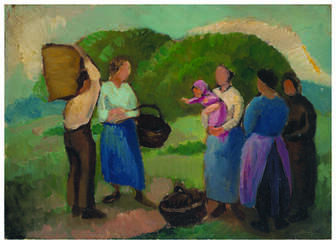Julio González (1876 - 1942) — Auction price
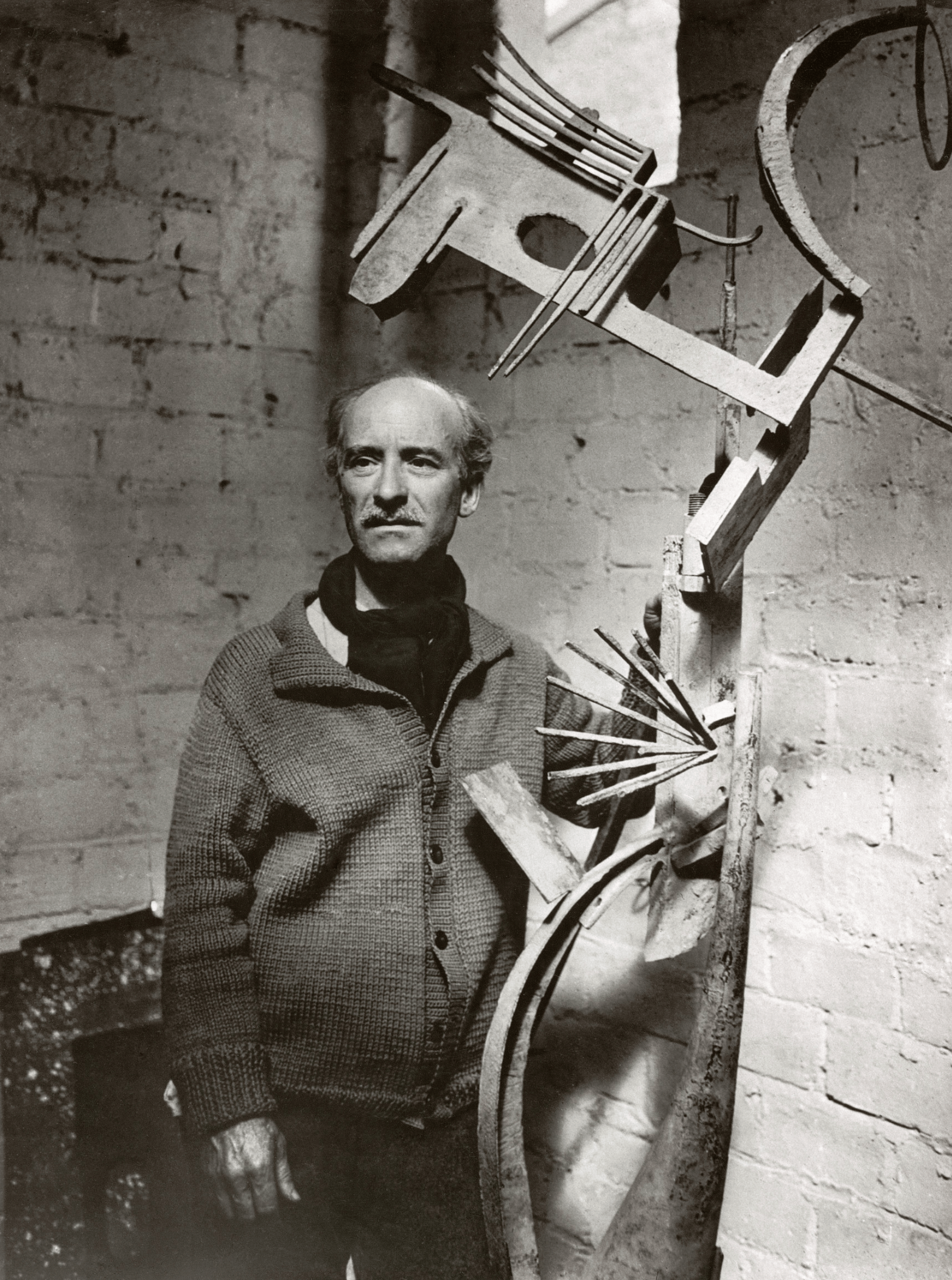
Julio González was a Spanish sculptor and painter. He was began his artistic career as a painter, but later turned to sculpture, becoming one of the most important figures in the development of modern sculpture in the 20th century.
González's work was heavily influenced by his interest in industrial materials, and he is known for his innovative use of iron and steel in sculpture. He was one of the first artists to use welding techniques in sculpture, and his work often features abstract forms and flowing lines.
González moved to Paris in 1900, where he became involved in the avant-garde art scene and formed close friendships with artists such as Pablo Picasso and Joan Miró. He continued to work as an artist throughout his life, producing a wide range of sculptures and paintings.
Today, his work is widely regarded as some of the most important in the history of modern sculpture, and his legacy has had a significant impact on the development of contemporary art. His sculptures can be found in collections around the world, including at the Museum of Modern Art in New York City and the Tate Gallery in London.
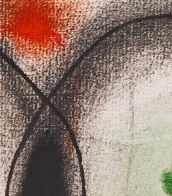

Julio González was a Spanish sculptor and painter. He was began his artistic career as a painter, but later turned to sculpture, becoming one of the most important figures in the development of modern sculpture in the 20th century.
González's work was heavily influenced by his interest in industrial materials, and he is known for his innovative use of iron and steel in sculpture. He was one of the first artists to use welding techniques in sculpture, and his work often features abstract forms and flowing lines.
González moved to Paris in 1900, where he became involved in the avant-garde art scene and formed close friendships with artists such as Pablo Picasso and Joan Miró. He continued to work as an artist throughout his life, producing a wide range of sculptures and paintings.
Today, his work is widely regarded as some of the most important in the history of modern sculpture, and his legacy has had a significant impact on the development of contemporary art. His sculptures can be found in collections around the world, including at the Museum of Modern Art in New York City and the Tate Gallery in London.


Julio González was a Spanish sculptor and painter. He was began his artistic career as a painter, but later turned to sculpture, becoming one of the most important figures in the development of modern sculpture in the 20th century.
González's work was heavily influenced by his interest in industrial materials, and he is known for his innovative use of iron and steel in sculpture. He was one of the first artists to use welding techniques in sculpture, and his work often features abstract forms and flowing lines.
González moved to Paris in 1900, where he became involved in the avant-garde art scene and formed close friendships with artists such as Pablo Picasso and Joan Miró. He continued to work as an artist throughout his life, producing a wide range of sculptures and paintings.
Today, his work is widely regarded as some of the most important in the history of modern sculpture, and his legacy has had a significant impact on the development of contemporary art. His sculptures can be found in collections around the world, including at the Museum of Modern Art in New York City and the Tate Gallery in London.
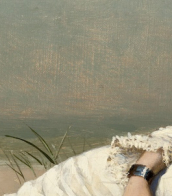

Julio González was a Spanish sculptor and painter. He was began his artistic career as a painter, but later turned to sculpture, becoming one of the most important figures in the development of modern sculpture in the 20th century.
González's work was heavily influenced by his interest in industrial materials, and he is known for his innovative use of iron and steel in sculpture. He was one of the first artists to use welding techniques in sculpture, and his work often features abstract forms and flowing lines.
González moved to Paris in 1900, where he became involved in the avant-garde art scene and formed close friendships with artists such as Pablo Picasso and Joan Miró. He continued to work as an artist throughout his life, producing a wide range of sculptures and paintings.
Today, his work is widely regarded as some of the most important in the history of modern sculpture, and his legacy has had a significant impact on the development of contemporary art. His sculptures can be found in collections around the world, including at the Museum of Modern Art in New York City and the Tate Gallery in London.


Julio González was a Spanish sculptor and painter. He was began his artistic career as a painter, but later turned to sculpture, becoming one of the most important figures in the development of modern sculpture in the 20th century.
González's work was heavily influenced by his interest in industrial materials, and he is known for his innovative use of iron and steel in sculpture. He was one of the first artists to use welding techniques in sculpture, and his work often features abstract forms and flowing lines.
González moved to Paris in 1900, where he became involved in the avant-garde art scene and formed close friendships with artists such as Pablo Picasso and Joan Miró. He continued to work as an artist throughout his life, producing a wide range of sculptures and paintings.
Today, his work is widely regarded as some of the most important in the history of modern sculpture, and his legacy has had a significant impact on the development of contemporary art. His sculptures can be found in collections around the world, including at the Museum of Modern Art in New York City and the Tate Gallery in London.
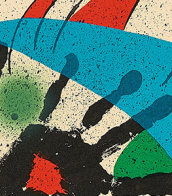

Julio González was a Spanish sculptor and painter. He was began his artistic career as a painter, but later turned to sculpture, becoming one of the most important figures in the development of modern sculpture in the 20th century.
González's work was heavily influenced by his interest in industrial materials, and he is known for his innovative use of iron and steel in sculpture. He was one of the first artists to use welding techniques in sculpture, and his work often features abstract forms and flowing lines.
González moved to Paris in 1900, where he became involved in the avant-garde art scene and formed close friendships with artists such as Pablo Picasso and Joan Miró. He continued to work as an artist throughout his life, producing a wide range of sculptures and paintings.
Today, his work is widely regarded as some of the most important in the history of modern sculpture, and his legacy has had a significant impact on the development of contemporary art. His sculptures can be found in collections around the world, including at the Museum of Modern Art in New York City and the Tate Gallery in London.
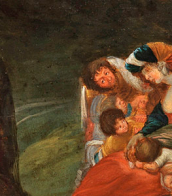

Julio González was a Spanish sculptor and painter. He was began his artistic career as a painter, but later turned to sculpture, becoming one of the most important figures in the development of modern sculpture in the 20th century.
González's work was heavily influenced by his interest in industrial materials, and he is known for his innovative use of iron and steel in sculpture. He was one of the first artists to use welding techniques in sculpture, and his work often features abstract forms and flowing lines.
González moved to Paris in 1900, where he became involved in the avant-garde art scene and formed close friendships with artists such as Pablo Picasso and Joan Miró. He continued to work as an artist throughout his life, producing a wide range of sculptures and paintings.
Today, his work is widely regarded as some of the most important in the history of modern sculpture, and his legacy has had a significant impact on the development of contemporary art. His sculptures can be found in collections around the world, including at the Museum of Modern Art in New York City and the Tate Gallery in London.


Julio González was a Spanish sculptor and painter. He was began his artistic career as a painter, but later turned to sculpture, becoming one of the most important figures in the development of modern sculpture in the 20th century.
González's work was heavily influenced by his interest in industrial materials, and he is known for his innovative use of iron and steel in sculpture. He was one of the first artists to use welding techniques in sculpture, and his work often features abstract forms and flowing lines.
González moved to Paris in 1900, where he became involved in the avant-garde art scene and formed close friendships with artists such as Pablo Picasso and Joan Miró. He continued to work as an artist throughout his life, producing a wide range of sculptures and paintings.
Today, his work is widely regarded as some of the most important in the history of modern sculpture, and his legacy has had a significant impact on the development of contemporary art. His sculptures can be found in collections around the world, including at the Museum of Modern Art in New York City and the Tate Gallery in London.
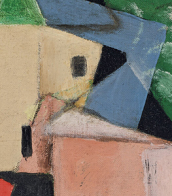

Julio González was a Spanish sculptor and painter. He was began his artistic career as a painter, but later turned to sculpture, becoming one of the most important figures in the development of modern sculpture in the 20th century.
González's work was heavily influenced by his interest in industrial materials, and he is known for his innovative use of iron and steel in sculpture. He was one of the first artists to use welding techniques in sculpture, and his work often features abstract forms and flowing lines.
González moved to Paris in 1900, where he became involved in the avant-garde art scene and formed close friendships with artists such as Pablo Picasso and Joan Miró. He continued to work as an artist throughout his life, producing a wide range of sculptures and paintings.
Today, his work is widely regarded as some of the most important in the history of modern sculpture, and his legacy has had a significant impact on the development of contemporary art. His sculptures can be found in collections around the world, including at the Museum of Modern Art in New York City and the Tate Gallery in London.


Julio González was a Spanish sculptor and painter. He was began his artistic career as a painter, but later turned to sculpture, becoming one of the most important figures in the development of modern sculpture in the 20th century.
González's work was heavily influenced by his interest in industrial materials, and he is known for his innovative use of iron and steel in sculpture. He was one of the first artists to use welding techniques in sculpture, and his work often features abstract forms and flowing lines.
González moved to Paris in 1900, where he became involved in the avant-garde art scene and formed close friendships with artists such as Pablo Picasso and Joan Miró. He continued to work as an artist throughout his life, producing a wide range of sculptures and paintings.
Today, his work is widely regarded as some of the most important in the history of modern sculpture, and his legacy has had a significant impact on the development of contemporary art. His sculptures can be found in collections around the world, including at the Museum of Modern Art in New York City and the Tate Gallery in London.


Julio González was a Spanish sculptor and painter. He was began his artistic career as a painter, but later turned to sculpture, becoming one of the most important figures in the development of modern sculpture in the 20th century.
González's work was heavily influenced by his interest in industrial materials, and he is known for his innovative use of iron and steel in sculpture. He was one of the first artists to use welding techniques in sculpture, and his work often features abstract forms and flowing lines.
González moved to Paris in 1900, where he became involved in the avant-garde art scene and formed close friendships with artists such as Pablo Picasso and Joan Miró. He continued to work as an artist throughout his life, producing a wide range of sculptures and paintings.
Today, his work is widely regarded as some of the most important in the history of modern sculpture, and his legacy has had a significant impact on the development of contemporary art. His sculptures can be found in collections around the world, including at the Museum of Modern Art in New York City and the Tate Gallery in London.
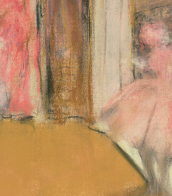

Julio González was a Spanish sculptor and painter. He was began his artistic career as a painter, but later turned to sculpture, becoming one of the most important figures in the development of modern sculpture in the 20th century.
González's work was heavily influenced by his interest in industrial materials, and he is known for his innovative use of iron and steel in sculpture. He was one of the first artists to use welding techniques in sculpture, and his work often features abstract forms and flowing lines.
González moved to Paris in 1900, where he became involved in the avant-garde art scene and formed close friendships with artists such as Pablo Picasso and Joan Miró. He continued to work as an artist throughout his life, producing a wide range of sculptures and paintings.
Today, his work is widely regarded as some of the most important in the history of modern sculpture, and his legacy has had a significant impact on the development of contemporary art. His sculptures can be found in collections around the world, including at the Museum of Modern Art in New York City and the Tate Gallery in London.


Julio González was a Spanish sculptor and painter. He was began his artistic career as a painter, but later turned to sculpture, becoming one of the most important figures in the development of modern sculpture in the 20th century.
González's work was heavily influenced by his interest in industrial materials, and he is known for his innovative use of iron and steel in sculpture. He was one of the first artists to use welding techniques in sculpture, and his work often features abstract forms and flowing lines.
González moved to Paris in 1900, where he became involved in the avant-garde art scene and formed close friendships with artists such as Pablo Picasso and Joan Miró. He continued to work as an artist throughout his life, producing a wide range of sculptures and paintings.
Today, his work is widely regarded as some of the most important in the history of modern sculpture, and his legacy has had a significant impact on the development of contemporary art. His sculptures can be found in collections around the world, including at the Museum of Modern Art in New York City and the Tate Gallery in London.
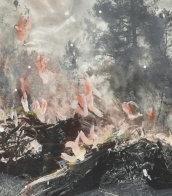

Julio González was a Spanish sculptor and painter. He was began his artistic career as a painter, but later turned to sculpture, becoming one of the most important figures in the development of modern sculpture in the 20th century.
González's work was heavily influenced by his interest in industrial materials, and he is known for his innovative use of iron and steel in sculpture. He was one of the first artists to use welding techniques in sculpture, and his work often features abstract forms and flowing lines.
González moved to Paris in 1900, where he became involved in the avant-garde art scene and formed close friendships with artists such as Pablo Picasso and Joan Miró. He continued to work as an artist throughout his life, producing a wide range of sculptures and paintings.
Today, his work is widely regarded as some of the most important in the history of modern sculpture, and his legacy has had a significant impact on the development of contemporary art. His sculptures can be found in collections around the world, including at the Museum of Modern Art in New York City and the Tate Gallery in London.


Julio González was a Spanish sculptor and painter. He was began his artistic career as a painter, but later turned to sculpture, becoming one of the most important figures in the development of modern sculpture in the 20th century.
González's work was heavily influenced by his interest in industrial materials, and he is known for his innovative use of iron and steel in sculpture. He was one of the first artists to use welding techniques in sculpture, and his work often features abstract forms and flowing lines.
González moved to Paris in 1900, where he became involved in the avant-garde art scene and formed close friendships with artists such as Pablo Picasso and Joan Miró. He continued to work as an artist throughout his life, producing a wide range of sculptures and paintings.
Today, his work is widely regarded as some of the most important in the history of modern sculpture, and his legacy has had a significant impact on the development of contemporary art. His sculptures can be found in collections around the world, including at the Museum of Modern Art in New York City and the Tate Gallery in London.


Julio González was a Spanish sculptor and painter. He was began his artistic career as a painter, but later turned to sculpture, becoming one of the most important figures in the development of modern sculpture in the 20th century.
González's work was heavily influenced by his interest in industrial materials, and he is known for his innovative use of iron and steel in sculpture. He was one of the first artists to use welding techniques in sculpture, and his work often features abstract forms and flowing lines.
González moved to Paris in 1900, where he became involved in the avant-garde art scene and formed close friendships with artists such as Pablo Picasso and Joan Miró. He continued to work as an artist throughout his life, producing a wide range of sculptures and paintings.
Today, his work is widely regarded as some of the most important in the history of modern sculpture, and his legacy has had a significant impact on the development of contemporary art. His sculptures can be found in collections around the world, including at the Museum of Modern Art in New York City and the Tate Gallery in London.


Julio González was a Spanish sculptor and painter. He was began his artistic career as a painter, but later turned to sculpture, becoming one of the most important figures in the development of modern sculpture in the 20th century.
González's work was heavily influenced by his interest in industrial materials, and he is known for his innovative use of iron and steel in sculpture. He was one of the first artists to use welding techniques in sculpture, and his work often features abstract forms and flowing lines.
González moved to Paris in 1900, where he became involved in the avant-garde art scene and formed close friendships with artists such as Pablo Picasso and Joan Miró. He continued to work as an artist throughout his life, producing a wide range of sculptures and paintings.
Today, his work is widely regarded as some of the most important in the history of modern sculpture, and his legacy has had a significant impact on the development of contemporary art. His sculptures can be found in collections around the world, including at the Museum of Modern Art in New York City and the Tate Gallery in London.
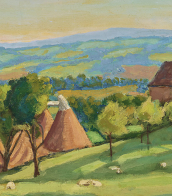

Julio González was a Spanish sculptor and painter. He was began his artistic career as a painter, but later turned to sculpture, becoming one of the most important figures in the development of modern sculpture in the 20th century.
González's work was heavily influenced by his interest in industrial materials, and he is known for his innovative use of iron and steel in sculpture. He was one of the first artists to use welding techniques in sculpture, and his work often features abstract forms and flowing lines.
González moved to Paris in 1900, where he became involved in the avant-garde art scene and formed close friendships with artists such as Pablo Picasso and Joan Miró. He continued to work as an artist throughout his life, producing a wide range of sculptures and paintings.
Today, his work is widely regarded as some of the most important in the history of modern sculpture, and his legacy has had a significant impact on the development of contemporary art. His sculptures can be found in collections around the world, including at the Museum of Modern Art in New York City and the Tate Gallery in London.


Julio González was a Spanish sculptor and painter. He was began his artistic career as a painter, but later turned to sculpture, becoming one of the most important figures in the development of modern sculpture in the 20th century.
González's work was heavily influenced by his interest in industrial materials, and he is known for his innovative use of iron and steel in sculpture. He was one of the first artists to use welding techniques in sculpture, and his work often features abstract forms and flowing lines.
González moved to Paris in 1900, where he became involved in the avant-garde art scene and formed close friendships with artists such as Pablo Picasso and Joan Miró. He continued to work as an artist throughout his life, producing a wide range of sculptures and paintings.
Today, his work is widely regarded as some of the most important in the history of modern sculpture, and his legacy has had a significant impact on the development of contemporary art. His sculptures can be found in collections around the world, including at the Museum of Modern Art in New York City and the Tate Gallery in London.


Julio González was a Spanish sculptor and painter. He was began his artistic career as a painter, but later turned to sculpture, becoming one of the most important figures in the development of modern sculpture in the 20th century.
González's work was heavily influenced by his interest in industrial materials, and he is known for his innovative use of iron and steel in sculpture. He was one of the first artists to use welding techniques in sculpture, and his work often features abstract forms and flowing lines.
González moved to Paris in 1900, where he became involved in the avant-garde art scene and formed close friendships with artists such as Pablo Picasso and Joan Miró. He continued to work as an artist throughout his life, producing a wide range of sculptures and paintings.
Today, his work is widely regarded as some of the most important in the history of modern sculpture, and his legacy has had a significant impact on the development of contemporary art. His sculptures can be found in collections around the world, including at the Museum of Modern Art in New York City and the Tate Gallery in London.



